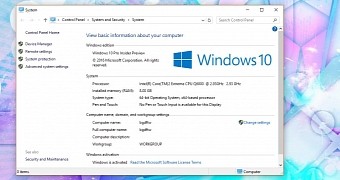Windows 10 is supposed to tackle the worlds of both tablets and PCs, just like its predecessor, but as far as the former category is concerned, it barely makes a difference.
According to a survey conducted by MKM Partners and cited by BidnessETC, 43 percent of those who decide to purchase a new tablet these days don’t specifically look for a device running Windows 10, as the new operating system doesn’t seem to be reason enough just yet to make a difference in this side of the market.
The source explains that these stats were collected before the actual debut of the Surface Pro 4, so Microsoft’s new tablet (which could replace your laptop) is expected to make a bigger difference.
Windows 10 adoption
But it’s also very important to note that, as part of the same study, only 31 percent of the respondents who had already had a Windows PC or tablet revealed they upgraded their devices to the new operating system. 41 percent of those who were looking to purchase a new PC considered Windows 10 a differentiating factor, explaining that Microsoft’s new product indeed comes with significant improvements in terms of features and usability.
Windows 10 currently has a market share that’s getting very close to 8 percent, but statistics show that, while it actually managed to skyrocket in the first weeks of availability, adoption has slowed down and barely increased by 1 percent every month after that.
Microsoft has a plan to bring Windows 10 on 1 billion devices by 2017, and right now, the company says that more than 110 million installs have already been registered. If the same adoption trend is maintained, reaching this goal is clearly possible, but it all depends on how many Windows 7 users actually agree to move to the new OS before the free upgrade offer expires.

 14 DAY TRIAL //
14 DAY TRIAL //